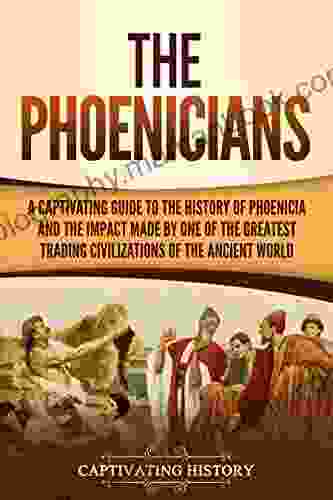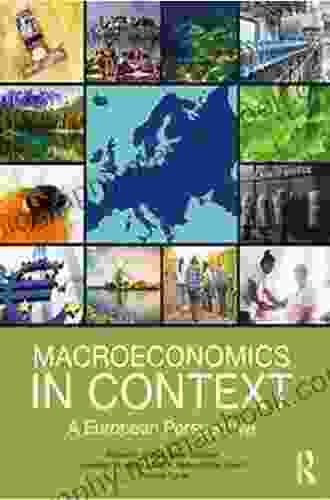Macroeconomics in Context: A European Perspective

Macroeconomics is the study of the economy as a whole. It examines the behavior of key economic variables, such as output, employment, inflation, and interest rates. Macroeconomics also studies the policies that governments use to influence these variables.
The European economy is one of the largest and most dynamic in the world. It is also one of the most complex, due to the diversity of its member states. As a result, macroeconomics in Europe is a particularly challenging and fascinating field of study.
This article provides a comprehensive overview of macroeconomics from a European perspective. It covers key macroeconomic concepts, models, and policies, with a focus on the European context. The article also discusses the challenges and opportunities facing the European economy in the 21st century.
4 out of 5
| Language | : | English |
| File size | : | 11990 KB |
| Text-to-Speech | : | Enabled |
| Screen Reader | : | Supported |
| Enhanced typesetting | : | Enabled |
| Word Wise | : | Enabled |
| Print length | : | 712 pages |
The following are some of the key macroeconomic concepts that are discussed in this article:
- Output: Output is the total value of goods and services produced in an economy over a given period of time. It is typically measured by gross domestic product (GDP).
- Employment: Employment is the number of people who are working in an economy. It is typically measured by the unemployment rate.
- Inflation: Inflation is the rate at which prices are rising in an economy. It is typically measured by the consumer price index (CPI).
- Interest rates: Interest rates are the prices that banks charge for loans. They are a key determinant of investment and consumption spending.
Macroeconomic models are used to represent the behavior of the economy. They can be used to predict the effects of different policies and to identify the factors that are most important for economic growth.
There are many different types of macroeconomic models, but one of the most common is the aggregate demand-aggregate supply (AD-AS) model. This model divides the economy into two sectors: the aggregate demand sector and the aggregate supply sector.
The aggregate demand sector represents the demand for goods and services in the economy. It is determined by factors such as consumer spending, investment spending, and government spending.
The aggregate supply sector represents the supply of goods and services in the economy. It is determined by factors such as the size of the labor force, the capital stock, and the level of technology.
The AD-AS model can be used to explain a variety of economic phenomena, such as inflation, unemployment, and economic growth. It can also be used to analyze the effects of different policies, such as monetary policy and fiscal policy.
Macroeconomic policies are used by governments to influence the economy. There are two main types of macroeconomic policies: monetary policy and fiscal policy.
Monetary policy is the set of tools that a central bank uses to control the money supply and interest rates. The main tools of monetary policy are open market operations, changes in reserve requirements, and changes in the discount rate.
Fiscal policy is the set of tools that a government uses to influence the level of government spending and taxation. The main tools of fiscal policy are government spending, taxes, and transfers.
Macroeconomic policies can be used to achieve a variety of goals, such as stabilizing output, reducing unemployment, controlling inflation, and promoting economic growth. However, it is important to note that there is no single policy that is always optimal. The best policy mix depends on the specific circumstances of each economy.
The European economy is one of the largest and most dynamic in the world. It is also one of the most complex, due to the diversity of its member states.
The European economy is facing a number of challenges in the 21st century, including:
- Slowing growth: The European economy has been growing slowly for a number of years. This is due to a number of factors, including the global financial crisis, the euro crisis, and the aging population.
- High unemployment: Unemployment is a major problem in many European countries. This is especially true for young people.
- Rising inequality: Inequality is rising in many European countries. This is due to a number of factors, including the decline of manufacturing jobs and the increasing concentration of wealth in the hands of a few individuals.
- Climate change: Climate change is a major threat to the European economy. It is likely to lead to more extreme weather events, which could damage infrastructure and disrupt businesses.
The European economy also has a number of opportunities in the 21st century, including:
- Technological innovation: Europe is a leader in many areas of technological innovation, such as renewable energy and artificial intelligence. This could lead to new jobs and economic growth.
- Demographic change: The European population is aging, but this could also lead to new opportunities. For example, older people are more likely to spend money on healthcare and leisure activities.
- Integration: The European Union is a single market of over 500 million people. This provides businesses with access to a large and diverse market.
The future of the European economy is uncertain. However, by addressing the challenges and seizing the opportunities, Europe can continue to be a prosperous and dynamic region.
Macroeconomics is a complex and challenging field of study, but it is also essential for understanding the economy. This article has provided a comprehensive overview of macroeconomics from a European perspective. It has covered key macroeconomic concepts, models, and policies, with a focus on the European context. It has also discussed the challenges and opportunities facing the European economy in the 21st century.
By understanding macroeconomics, we can better understand the world around us and make informed decisions about the future.
4 out of 5
| Language | : | English |
| File size | : | 11990 KB |
| Text-to-Speech | : | Enabled |
| Screen Reader | : | Supported |
| Enhanced typesetting | : | Enabled |
| Word Wise | : | Enabled |
| Print length | : | 712 pages |
Do you want to contribute by writing guest posts on this blog?
Please contact us and send us a resume of previous articles that you have written.
 Top Book
Top Book Novel
Novel Fiction
Fiction Nonfiction
Nonfiction Literature
Literature Paperback
Paperback Hardcover
Hardcover E-book
E-book Audiobook
Audiobook Bestseller
Bestseller Classic
Classic Mystery
Mystery Thriller
Thriller Romance
Romance Fantasy
Fantasy Science Fiction
Science Fiction Biography
Biography Memoir
Memoir Autobiography
Autobiography Poetry
Poetry Drama
Drama Historical Fiction
Historical Fiction Self-help
Self-help Young Adult
Young Adult Childrens Books
Childrens Books Graphic Novel
Graphic Novel Anthology
Anthology Series
Series Encyclopedia
Encyclopedia Reference
Reference Guidebook
Guidebook Textbook
Textbook Workbook
Workbook Journal
Journal Diary
Diary Manuscript
Manuscript Folio
Folio Pulp Fiction
Pulp Fiction Short Stories
Short Stories Fairy Tales
Fairy Tales Fables
Fables Mythology
Mythology Philosophy
Philosophy Religion
Religion Spirituality
Spirituality Essays
Essays Critique
Critique Commentary
Commentary Glossary
Glossary Bibliography
Bibliography Index
Index Table of Contents
Table of Contents Preface
Preface Introduction
Introduction Foreword
Foreword Afterword
Afterword Appendices
Appendices Annotations
Annotations Footnotes
Footnotes Epilogue
Epilogue Prologue
Prologue Melissa Stewart
Melissa Stewart Steven K Scott
Steven K Scott Scott Smith
Scott Smith Kevin Johnson
Kevin Johnson F P Spirit
F P Spirit Diane Harte
Diane Harte Jeff Desjardins
Jeff Desjardins Steven John Tait
Steven John Tait Francine Jay
Francine Jay Sasscer Hill
Sasscer Hill Mina Irfan
Mina Irfan Moira Linehan
Moira Linehan Kristen Mattson
Kristen Mattson Pooja Gupta
Pooja Gupta David Gemmell
David Gemmell Lord Alfred Tennyson
Lord Alfred Tennyson Laura Sandefer
Laura Sandefer Jana Deleon
Jana Deleon Jamie Martin
Jamie Martin Lisa M Jones
Lisa M Jones
Light bulbAdvertise smarter! Our strategic ad space ensures maximum exposure. Reserve your spot today!

 Jarrett BlairCaptivating Guide To The History Of Phoenicia And The Impact Made By One Of...
Jarrett BlairCaptivating Guide To The History Of Phoenicia And The Impact Made By One Of...
 Johnny TurnerA Captivating Guide to the English Protestants Who Grew Discontent in the...
Johnny TurnerA Captivating Guide to the English Protestants Who Grew Discontent in the... Jeffrey HayesFollow ·18.5k
Jeffrey HayesFollow ·18.5k David PetersonFollow ·19.4k
David PetersonFollow ·19.4k Grayson BellFollow ·18.6k
Grayson BellFollow ·18.6k Joshua ReedFollow ·2.3k
Joshua ReedFollow ·2.3k Dillon HayesFollow ·4.2k
Dillon HayesFollow ·4.2k Oliver FosterFollow ·11.9k
Oliver FosterFollow ·11.9k Langston HughesFollow ·11.4k
Langston HughesFollow ·11.4k Joel MitchellFollow ·6.5k
Joel MitchellFollow ·6.5k

 Barry Bryant
Barry BryantKnitting Pattern Kp190 Baby Sleeping Bags Sizes 3mths...
This easy-to-follow...

 Rudyard Kipling
Rudyard KiplingFolk Music Arrangements of Bartók: A Musical Tapestry of...
Béla Bartók, the renowned...

 Garrett Bell
Garrett BellThe Yellow House Memoir: A Literary Masterpiece that...
A Journey of Resilience,...

 George Martin
George MartinAssassin Witch Dark Faerie: The Bonegates
In the shadowy...
4 out of 5
| Language | : | English |
| File size | : | 11990 KB |
| Text-to-Speech | : | Enabled |
| Screen Reader | : | Supported |
| Enhanced typesetting | : | Enabled |
| Word Wise | : | Enabled |
| Print length | : | 712 pages |












